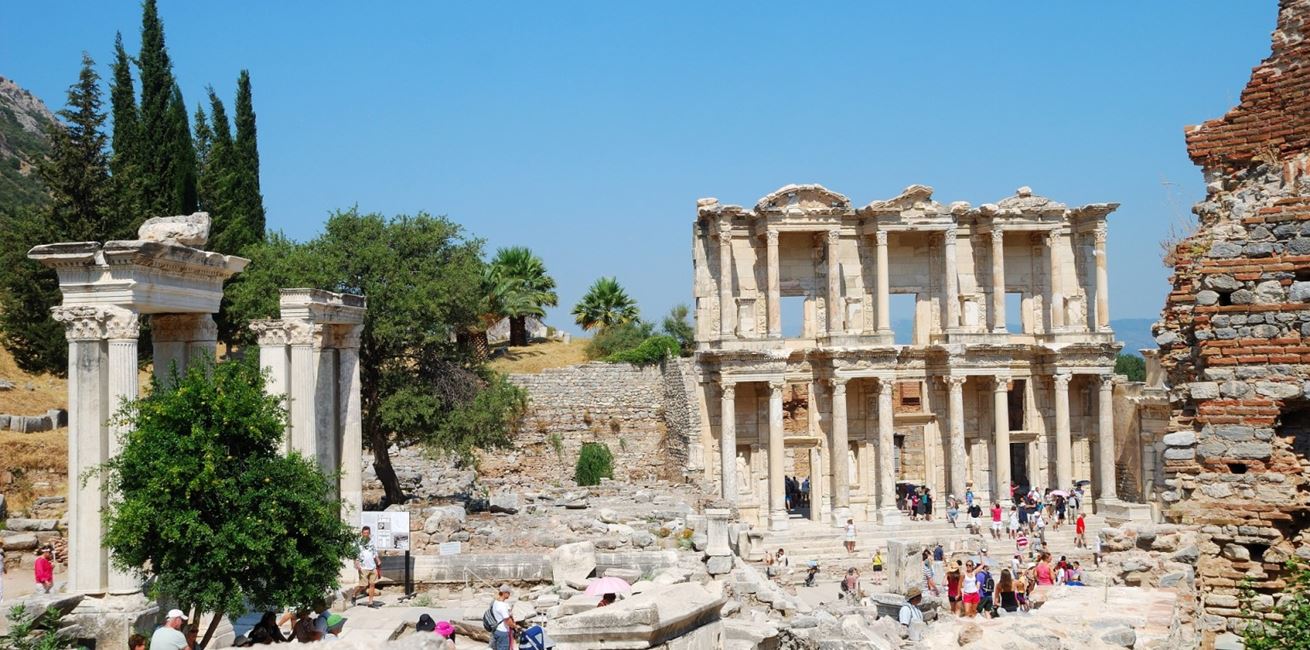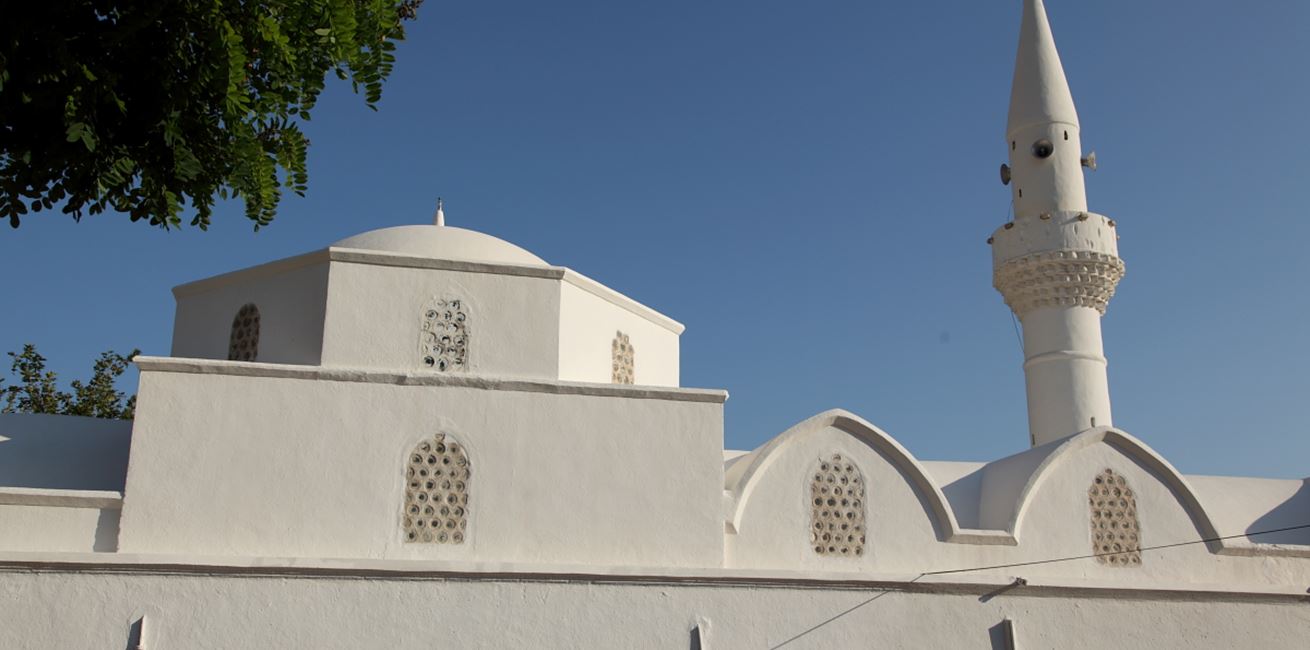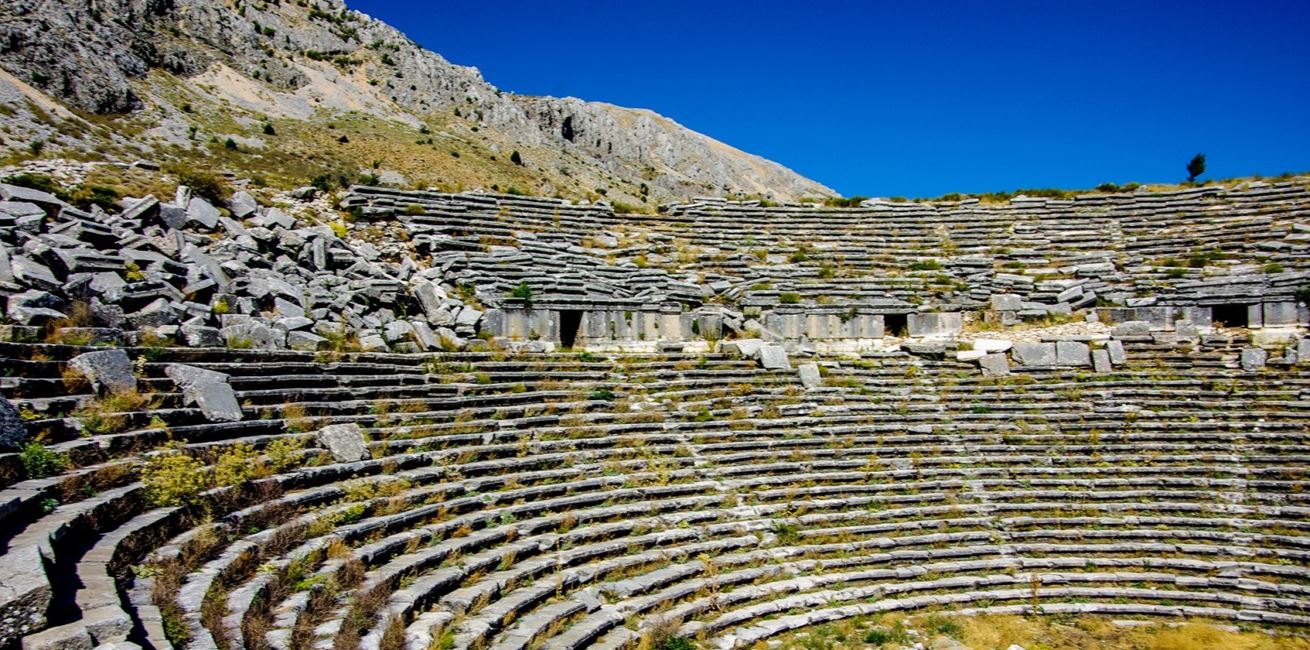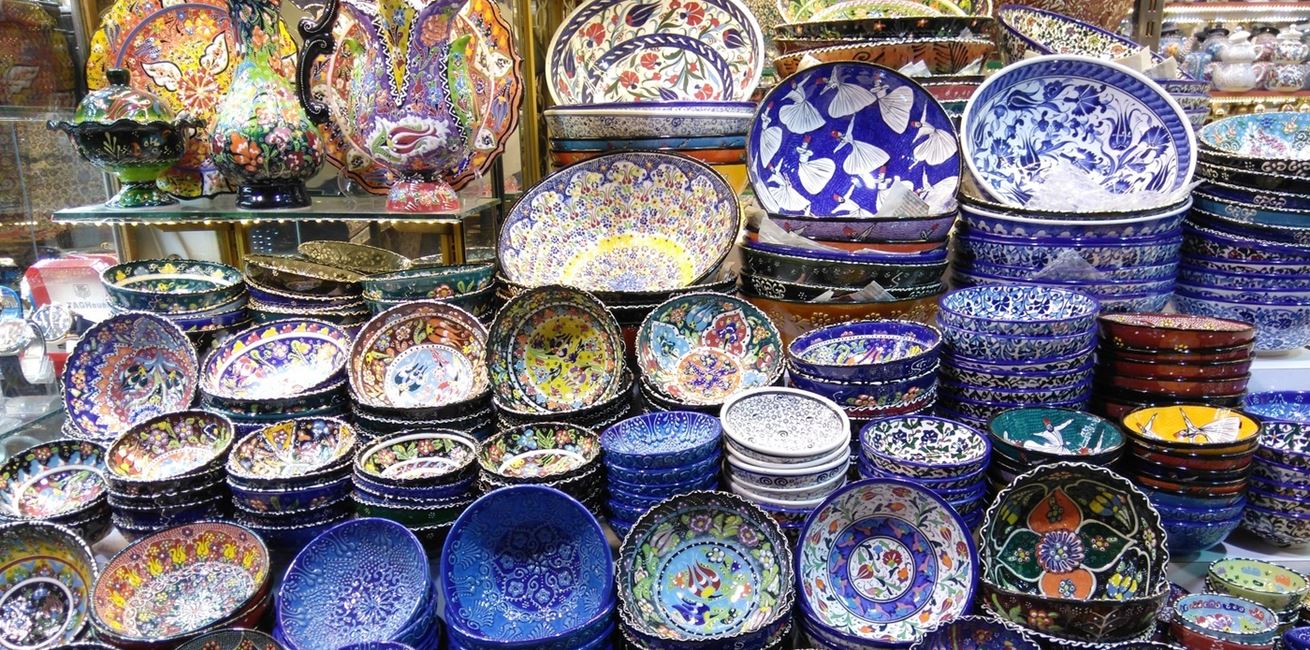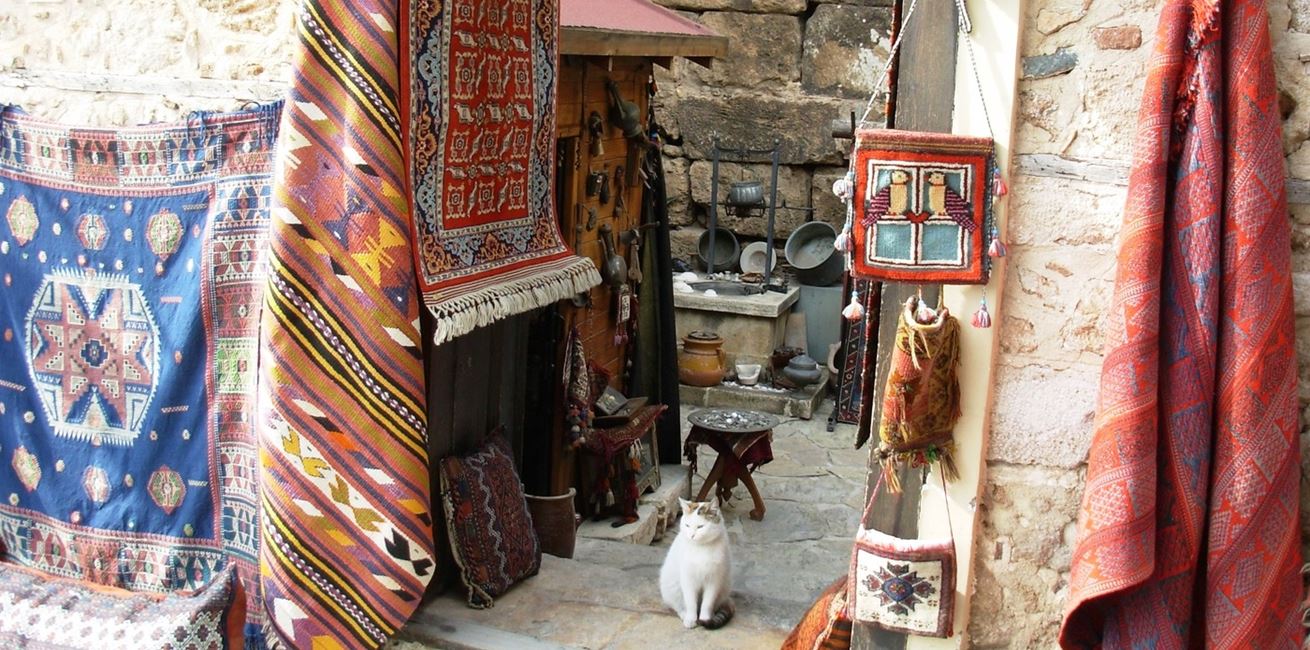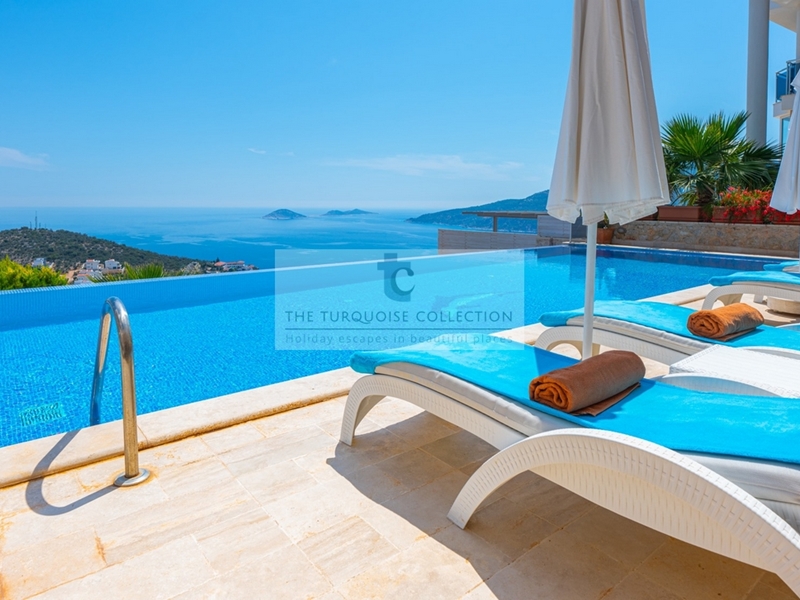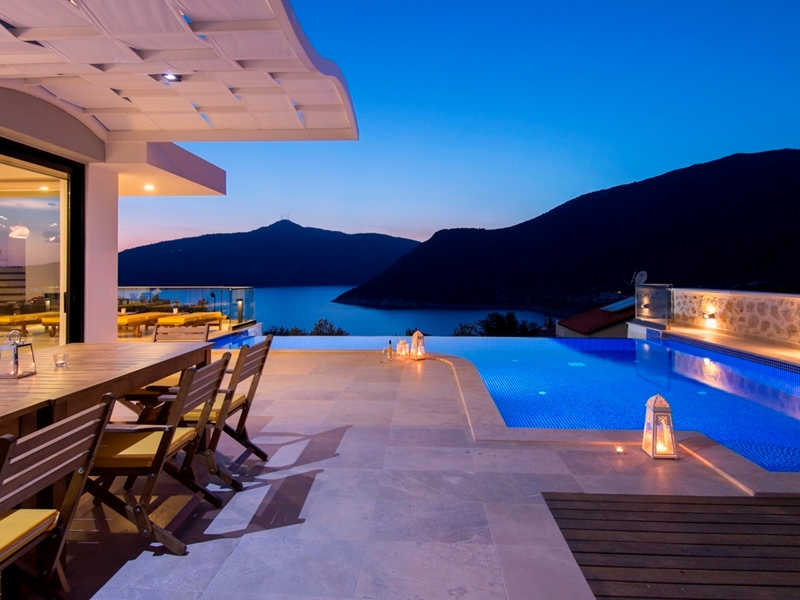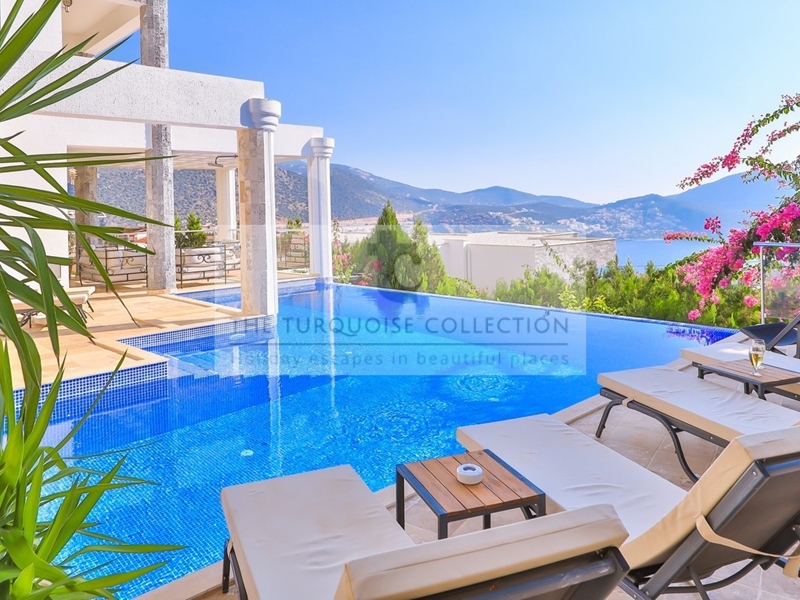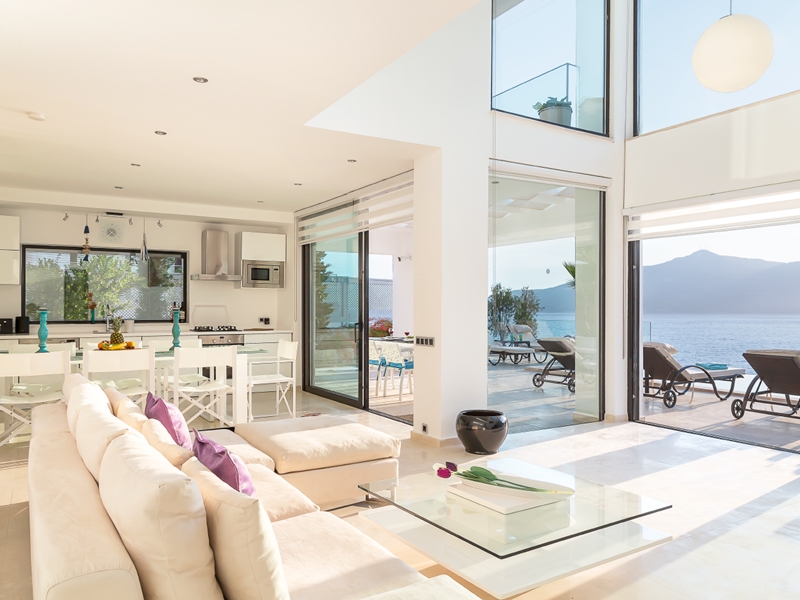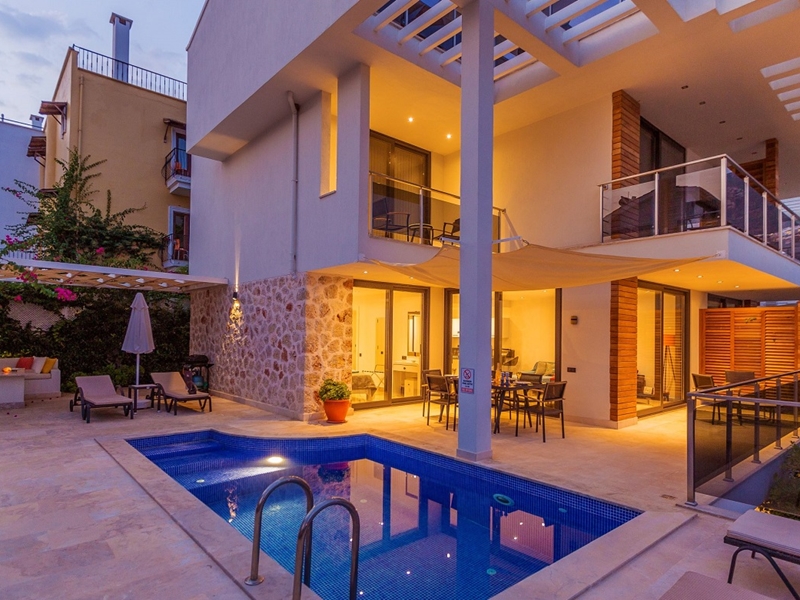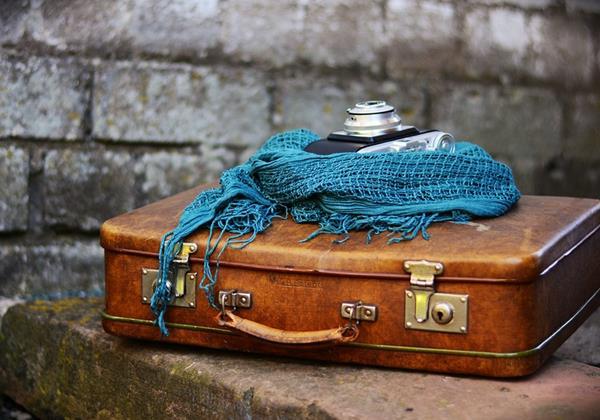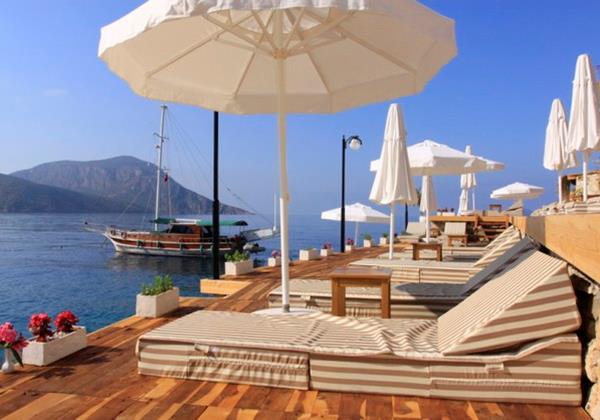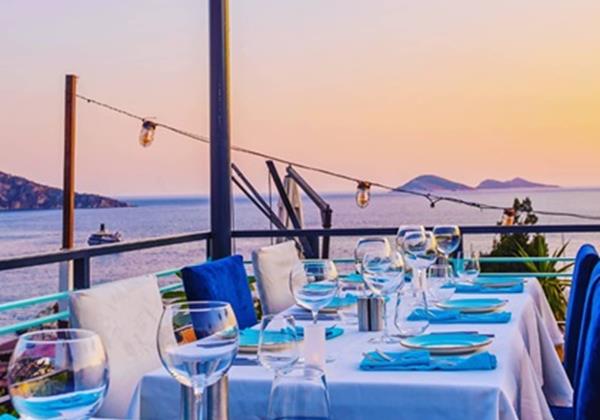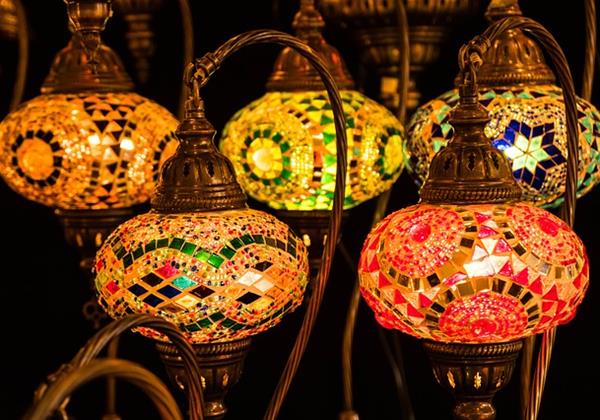History and Culture
History of Lycia and its people.
Ancient Lycia encompasses the area that runs from Ekincik to as far as Antalya, a semi-circle of some of the most mountainous and wild landscape to be encountered anywhere in Turkey. During the Ottoman period it was called 'Uc', the 'Frontier', a name that conjures up the nature of the landscape. It is a region hemmed in by mountains. On the west and east two high mountain ridges, the tallest peaks standing well over 3000 meters (10,000 feet) high, cut off Lycia from neighbouring Caria to the west and Pamphylia to the east. In the north a lower but no less rugged range and a great plateau cut Lycia off from central Anatolia. Around the coast a series of mountain ranges drop precipitously into the sea and though the peaks are not as high as those in the interior, the aspect from seaward is of an inhospitable coast. Right into early summer the highest peaks in Lycia, Akdag in the west and Bey Dagi (ancient Mt Solymnus) in the east, are covered in snow on the highest slopes.

As the landscape is wild, so were the men who lived here. The Lycians enjoyed a reputation for independence and fought for it tooth and nail, often to the last man.
In 546 BC the Persians defeated Croesus, the last Lydian king, and advanced upon Lycia. On the Plain of Xanthos the Lycians met the much superior forces of the Persians, to no avail. Herodotus tells us of the tragic finale to the battle:
"When Harpagus advanced into the plain of Xanthos, they met him in battle, though greatly outnumbered, and fought with much gallantry; at length, however, they were defeated and forced to retire within their walls, whereupon they collected their women, children, slaves, and other property and shut them up in the citadel, set fire to it and burnt it to the ground. Then having sworn to do or die, they marched out to meet the enemy and were killed to a man."
Five hundred years later in 42 BC it all happened again when Brutus besieged Xanthos. Against a superior force the Lycians fought to the finish, and when they saw there was no hope of victory, they once again slew their women and children and burnt the city down. Plutarch recorded Brutus' feelings on this second mass suicide:
"It was so tragically a sight that Brutus could not bear to see it, but wept at the very mention of the scene. Thus the Xanthians, after a long space of years, repeated by their desperate deed the calamity of their forefathers, who after the very same manner in the Persian Wars had fired their city and destroyed themselves."
Such was the feeling of the Lycians towards independence that they were the last region to be incorporated into the Roman provinces in Asia Minor.

Who were these Lycians and where did they come from? They are mentioned in Homer's Iliad where they fought on the side of the Trojans in defence of Troy, a gallant force from "distant Lycia and the eddying Xanthos". Herodotus fills us in on the details. The Lycians, he says, came from Crete after "Sarpedon and Minos, fought for the throne, and the victorious Minos expelled Sarpedon and his party". They were then called the Termilae, and only adopted the name Lycian when the noble Lycus, son of King Pandion was expelled from Athens and came to join Sarpedon. From Lycus they adopted the name Lycian. It's all a bit tortuous and not as interesting as the light Hittite and Egyptian references throw on the origins of the Lycians. The Hittites record that a maritime people called the Lukka lived here sometime in the 14th century BC. Egyptian records mention a people called the Lukki living here, a people feared as sea-raiders. This latter reference makes a good deal of sense on later evidence.
The Lycian coast has often been referred to as the 'pirate coast', and with its many strategically sited coves and islands where these sea-raiders could lie in wait for plump merchant ships tramping up and down the coast, it deserves the reputation. Numerous campaigns were mounted to clean up the coast from as early as 1194 BC right up until the 19th century. A relief at Medinet Habu in the Nile delta records how Ramses III put together a great fleet to take on the Lukka and decisively defeated them, leaving the coast free of piracy for a while. When Xerxes assembled his huge force for the invasion of Greece in 480 BC the Lycians contributed fifty ships and Herodotus gives us this tantalizing description of the piratical bunch that manned them:
"They wore greaves and corsets; they carried bows of cornel wood, cane arrows without feathers, and javelins. They had goatskin slung round their shoulders, and hats stuck round with feathers. They also carried daggers and rip-hooks."

Piracy is again mentioned in the 5th century BC, but it is not until the Roman occupation of Asia Minor that attempts were again made to bring it under control. In 78 BC a campaign was mounted by Servilius Vatia, governor of Cilicia, and though he had moderate success, it did little to check it. In 67 BC Pompey, an able and intelligent admiral was given wide-ranging powers and almost unlimited resources to tackle the piracy problem, which he did with total success. However Pompey was reluctant to give up his power and his ships and became himself something of a thorn in the Senate's side. After the fall of Rome the Lycian coast once again became a haven for pirate fleets and not until the 18th and 19th centuries and the presence of the British Navy was the piracy problem again tackled and the Lycian coast cleaned up.
In this remote region the sites of over forty cities have been found and much remains to identify the culture of the Lycians. The most obvious features of the Lycian landscape are the tombs and sarcophagi left behind. They are everywhere and it is difficult not to think of the region as a vast necropolis peopled with the shadowy figures of Lycian nobles and warriors. Ancestor-worship was evidently important to the Lycians and the tombs are extravagant affairs, the more grandiose decorated with a frieze and inscriptions placing a curse upon anyone tampering with the tomb. Five distinct types of tomb can be distinguished: pillar-tombs, temple-tombs, house-tombs, pigeon-hole tombs, and the ubiquitous sarcophagi.
Pillar-tombs are specific to Lycia and consist of a long tapering pillar set on a stone base with the grave chamber at the top. These were for important dynasts and the best examples are at Xanthos. Temple-tombs are maybe the most impressive of the Lycian tombs and consist of a temple facade with a grave chamber behind it. Those at Caunos are the most romantically sited while those at Fethiye the most accessible. House-tombs were modelled on the wooden houses of the Lycians and so give us some idea of what everyday accommodation was like several thousand years ago. They are smaller than the temple-tombs, though often several stories high and the stone has been hewn to imitate wooden roof beams and the doorway and portico. The house-tombs were sometimes decorated with relieves and painted as at Myra where fragments of a painted relief have miraculously survived.

Pigeon-hole tombs were the down-market version of temple and house tombs,small unadorned chambers cut into a cliff-face. The best examples are at Pinara where the cliffs are literally pock-marked by these tombs. Sarcophagi are found everywhere: scattered over hill-sides, on the summits of hills, by the shore, and in the sea where the land has subsided. The older sarcophagi are the largest with massive stone bases, grave chambers, and heavy lids often with a peaked 'gothic' look to them. In Roman times the sarcophagi became smaller and less ornate, perhaps as the importance of ancestor-worship declined.
With the decline of the Roman Empire, so too Lycian fortunes declined. In Byzantine times there were small settlements around the coast, a number of Byzantine churches will be seen in isolated spots, but the interior was not heavily populated as in Lycian times. In the late middle Ages this region was viewed as a wilderness, the region of "Uc", the "Frontier" of the Ottomans, and the coast was the haunt of pirates who had semi-permanent settlements ashore.
The Lycians and Lycian culture faded into vague folk-memories of a proud and independent people who had built great stone cities and buried their dead in magnificent tombs. Not until those intrepid travellers of the 19th century, Francis Beaufort, Charles Newton, Thomas Spratt and Edward Forbes, was the existence and extent of Lycian culture to be brought to the notice of the west.
Kalkan History
Kalamaki, as Kalkan was known in ancient history is thought to have been founded between 150-200 years ago by traders from the Greek Island of Meis, which lies 2 miles off shore from the town of Kas, which is 18 miles from Kalkan.
The success of those early traders encouraged others of both Greek and Turkish origin to settle. Evidence of this can be seen in the similarity in architecture in Meis and Kalkan. Settlement was further stimulated by Kalkan's harbour which was the only safe, hospitable harbour between Fethiye and Kas.

Kalkan's Mosque, originally a Greek orthodox church is one of Kalkan's earliest buildings and the architecture is very reminiscent of churches that can be seen in the Greek Mediterranean today.
Kalkan people were largely involved in trade. Various produce, including charcoal, silk, cotton, Olive oil, timber, grapes and sesame were brought by camel from the plains of Patara and mountains to be loaded onto ships where goods were taken to other parts of the Ottoman empire such as Egypt, Syria, Cyprus, Rhodes and Lebanon.
The 20th century saw Kalkan prosper with this trade, and history records that in the early 1900's there was a customs House, 17 restaurants, a goldsmith and several tailors at this time.
The 1920's saw the start of changes, with the founding of the Turkish Republic, and population exchange of Greeks and Turks. Greeks who were living in Turkey moved to Greece and Australia, and Turks who were living in Greece moved to Turkey.
In the 1960's a coastal road was completed between Kalkan and the larger towns of Antalya to the East and Fethiye to the West. This new mobility and the opportunities for local people to develop businesses further afield meant that at that time many people left Kalkan.
In the late 1960's Tourism started to grow, with the arrival of yachtsmen and others, and Kalkan's resurgence began. In 1984 an asphalt road made Kalkan more accessible than ever and further promoted tourism. In recent History, the Gocek tunnel was opened in 2005, and Dalaman International airport was opened in 2006.
